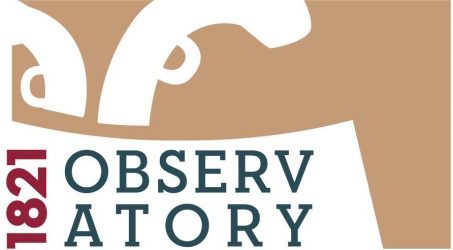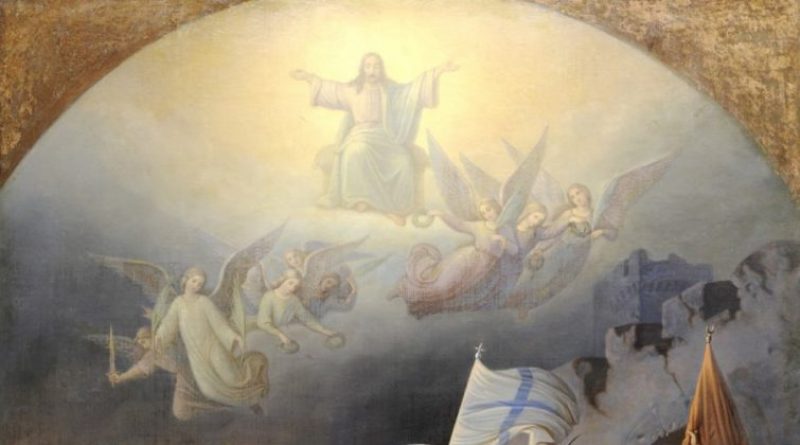Characters of the Revolution on stage
“Revolution” and “heroes” are two terms that acquire special significance when combined in the same conceptual context. Their relationship is such that almost the existence of one is dependent on the existence of the other. After all, how could a revolution take place without the people who conceived the idea of and played a role in its implementation? Respectively, the personalities who act in a revolution draw glamour and prestige from its dynamics and are characterised as heroes.
In the example of the Greek Revolution, this relationship is documented by the information that is known for each hero. In fact, the biographies of the people who played a catalytic role in its evolution have been a timeless source of inspiration for Greek and foreign artists, giving rise toplenty of artistic expressions that cover the entire gamut of visual art forms. Of particular interest are the efforts to regenerate the lives of the heroes through the performing arts and music, attempts that could not be absent from the anniversary program of events to celebrate the bicentenary of the beginning of the Greek Revolution. In this context, theatrical performances, musical events and poetic analogies were presented.
The characters projected through the above works reflect different aspects of the revolution both in terms of the role they played in it and in terms of the extent to which they influenced the course of events. More specifically, old and new artists presented full biographies of, and not just aspects relating to, warriors, politicians, scholars, philhellenes and everyday people who were active in the period before, during and after the proclamation of the revolution. Among them are Theodoros Kolokotronis, Markos Botsaris, Yannis Makriyannis, Georgios Karaiskakis, Ioannis Kapodistrias, Alexandros and Dimitrios Ypsilantis, the founding members of the Philiki Etaireia, Lord Byron, Rigas Feraios, Dionysios Solomos, Andreas Kalvos, Manto Mavrogenous, Laskarina Bouboulina, Domna Vizvizi, Kyra-Frosini, the besieged of Messolongi, the women of the revolution and philhellenes. In order to convey special aspects of the period, in some cases even fictionalcharacters created for other historical conjuncturessuch as Loukis Laras and Androniki were dramatised.
The subjects of the works are related to the preparation of the struggle and the reasons that led the Greeks to this choice, the dramatic moments during the course of the battles, the events that occurred during the unstable times after the revolution and the personal lives of its protagonists. In some cases, and especially in theatrical performances that concern moments from the life of a hero, the information from all these sources serves to offer a complete picture of the hero in question. Characteristic are the theatrical and musical performances: “Kolokotronis Contemplating the Future: Women Preparing for the Revolution and I’ll Be Thinking of Something”[1] and “Shades in Hades”[2] bythe Greek National Opera, “Kapodistrias Material”[3] by the Kalamata Municipal Regional Theatre, “Karaiskakis: The Misunderstood Hero”[4] by the Avlaia Theater, “Friendly Society: The Brotherhood behind the Revolution”[5] by the Piraeus Group Cultural Foundation and Pavlos Carrer’s opera “Markos Botsaris”[6], by the Maria Callas Municipal Music Theatre of Olympia. Of all the events, those works that deal with the inner quests and the individual concerns of the heroes are of particular interest. These specific artistic attempts focus on the performance of the different levels of psychosynthesis of the characters through the approach of their different identities to changes in the historical events. Indicative are the theatrical performances “Capodistrias: Monodrama of a Secret Life”[7] by the National Opera, “The Free Besieged”[8] by the National Theatre, “The Story of General Karaiskakis”[9] and “Loukis Laras”[10] by the Piraeus Municipal Theatre, and “Kolokotroni’s Memoirs”[11] by Marianna Lampiri. The musical-poetic performances, “Martha: A Story from Missolonghi”[12] by the Greek National Opera and “Free Besieged”[13] from the “Hydra for’21” programme reflect the same theme.
However, the dramatisation/demystification of historical facts or personal moments of the heroes of the Greek Revolution presented the audience with a different image in terms of the established historical patterns of the idealised form of the protagonists. These almost “deified” persons were attributed with human characteristics, with strengths and weaknesses. The catalytic factor is the projection of the action of the subjects themselves through different historical events and aspects of their lives. At times, individuals are shown to completely lose control of a situation and to stand out through their dynamism and heroism. Other times, they take the wrong choices that end in dramatic situations withan often inglorious end,while mobilising the audience’s emotions and arousing their sympathy (the Aristotelian interpretation of theatrical drama).
Periclis Chrysafakoglou, PhD candidate at the Department of History and Ethnology, Democritus University of Thrace
[2]https://www.nationalopera.gr/en/alternative-stage/es-opera/item/3642-skies-ston-adi
[3]https://dipethe.kalamatafaris.gr
[4]https://www.athinorama.gr/theatre/performance/karaiskakis_o_pareksigimenos_iroas-10071943/
[5]https://www.naftemporiki.gr/story/1747491/filiki-etaireia-i-adelfotita-piso-apo-tin-epanastasi
[6]https://www.ticketservices.gr/event/markos-botsaris-olympia-dimotiko-theatro-maria-kallas/
[8]https://www.n-t.gr/el/events/oldevents/The_free_besieged
[10]https://www.dithepi.gr/el/events/4694/
[11]https://kolokotronisonstage.gr/
Picture: Theodoros Vryzakis (1814-1878) – The Exodus of Messolonghi, 1853. Oil on canvas, 169 x 127 cm. Th. P. Vryzakis/1853 – National Gallery-Museum of Alexandros Soutsos.

